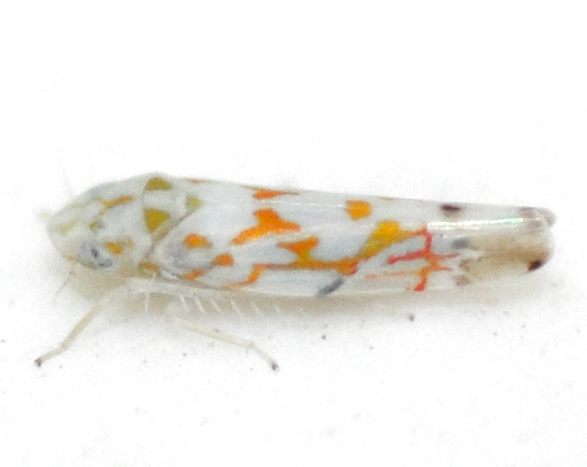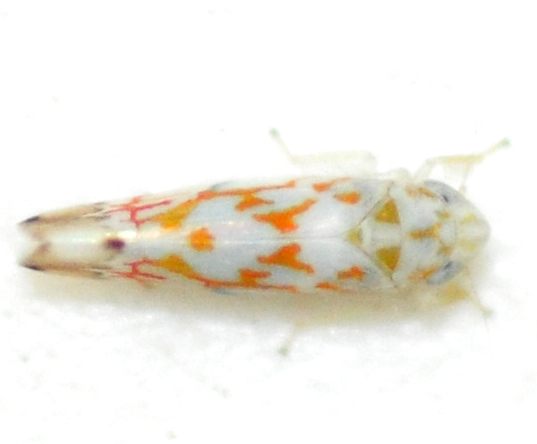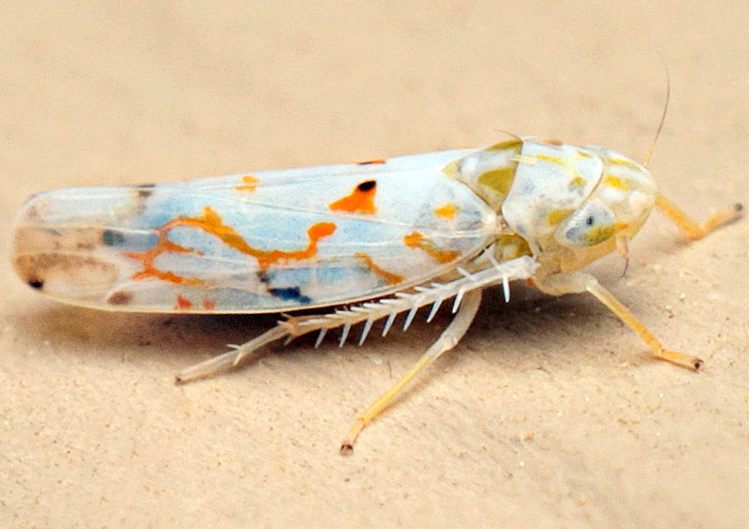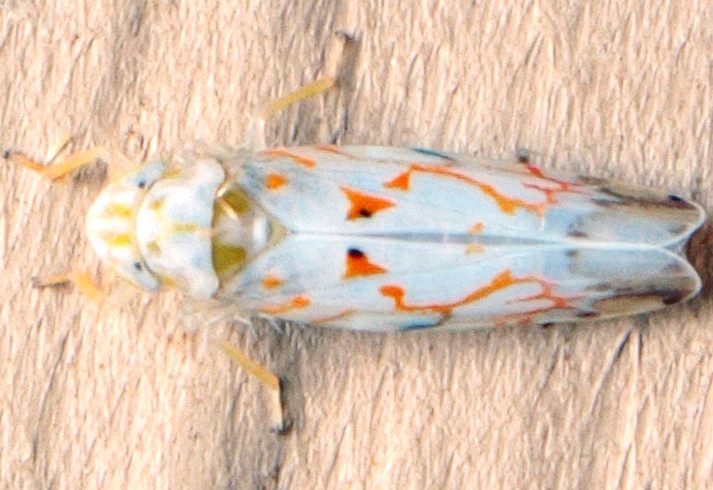
|
|
|
| synonym |
|
| description |
A somewhat distinctive pale species with an orange to red color pattern. The orange marks on the middle of the wing resemble a bow-tie in shape, and there are two variations of the wing pattern. The nominate form has only reddish-orange marks on the wing, while form 'accepta' has two bold black dots on the bow-tie; the reddish-orange wing markings can be slightly thinner in 'accepta'. The top of the head has two orange parallel lines and a pale midline, while the pronotum has a "Y" shaped mark that is concolorous with the orange lines on the head. The scutellum is also pale, with two yellow-green to orange lateral triangles in the upper corners. The wing tips have some dark smudging to them, with four black dots that, when the wings are closed, form the outline of a triangle. The face is pale, as is the thoracic venter except for the dark mesosternum. Adults are 2.9-3.2 mm long. (Dmitriev & Dietrich, 2007)
For additional images of this species, see: BG. |
| distribution |
Central and eastern United States, southeastern Canada (3I) |
| abundance |
Recorded from several counties across the state, primarily in the Piedmont where it can be locally common; likely more abundant in the right habitat. |
| seasonal_occurrence | |
| habitat |
Has been found in mixed hardwood forest and forest edge. |
| plant associates |
Vitis spp., Aesculus sp., Ilex decidua (3I) |
| behavior |
Can be attracted at night with a light. |
| comments |
|
status |
[Native:]
[Introduced:]
[Extirpated:] | | list_type |
[Official:]
[Provisional:] |
| adult_id | Unmistakable and widely known Identifiable from good quality photos of unworn specimens
Identifiable from photos showing undersides, or other specialized views [e.g., legs, face]
Identifiable only by close inspection of structural features or by DNA analysis NULL |
| nymph_id | Unmistakable and widely known Identifiable from good quality photos, especially where associated with known host plants
Identifiable from close inspection of specimens or by DNA analysis
Identifiable only through rearing to adulthood NULL |
| G_rank |
|
| S_rank |
|
| rank_comments |
|
| tribe |
Erythroneurini |
| subgenus |
|
Species Photo Gallery for Erythroneura delicata No Common Name |
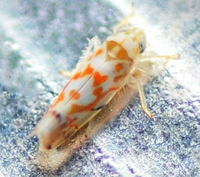 | Photo by: Kyle Kittelberger
Wake Co.
Comment: mixed hardwood forest habitat | 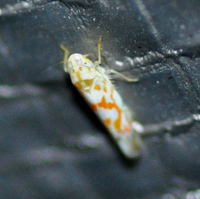 | Photo by: Kyle Kittelberger
Wake Co.
Comment: mixed hardwood forest habitat |
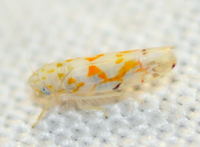 | Photo by: Kyle Kittelberger, Brian Bockhahn, Paul Scharf, Patrick Coin
Halifax Co.
Comment: grassy area and mixed hardwood forest edge near pine forest | 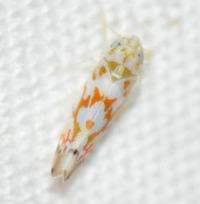 | Photo by: Kyle Kittelberger
Wake Co.
Comment: mixed hardwood forest habitat |
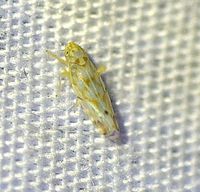 | Photo by: Paul Scharf, Brian Bockhahn
Burke Co.
Comment: Attracted to Black Light | 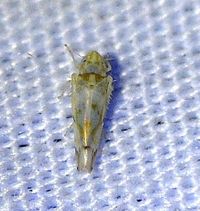 | Photo by: Paul Scharf, Brian Bockhahn
Burke Co.
Comment: Attracted to Black Light |
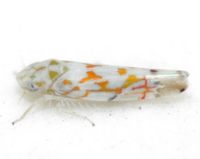 | Photo by: Kyle Kittelberger
Wake Co.
Comment: mixed hardwood forest | 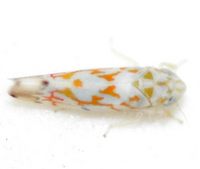 | Photo by: Kyle Kittelberger
Wake Co.
Comment: mixed hardwood forest |
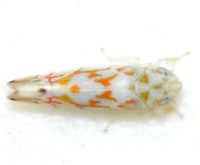 | Photo by: Kyle Kittelberger
Wake Co.
Comment: mixed hardwood forest | 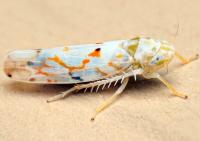 | Photo by: Ken Childs
Out Of State Co.
Comment: |
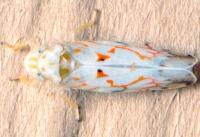 | Photo by: Ken Childs
Out Of State Co.
Comment: | 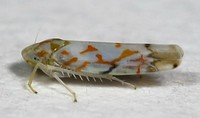 | Photo by: Rob Van Epps
Mecklenburg Co.
Comment: Came to UV light. Yard near woods. |
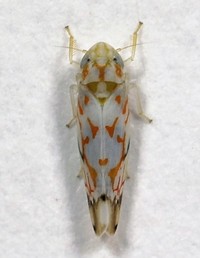 | Photo by: Rob Van Epps
Mecklenburg Co.
Comment: Came to UV light. Yard near woods. | 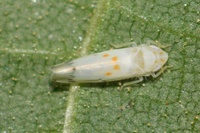 | Photo by: Scott Bolick
Forsyth Co.
Comment: |
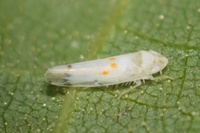 | Photo by: Scott Bolick
Forsyth Co.
Comment: | 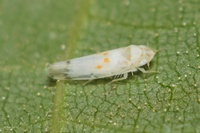 | Photo by: Scott Bolick
Forsyth Co.
Comment: |
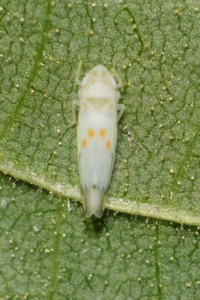 | Photo by: Scott Bolick
Forsyth Co.
Comment: |

 »
»